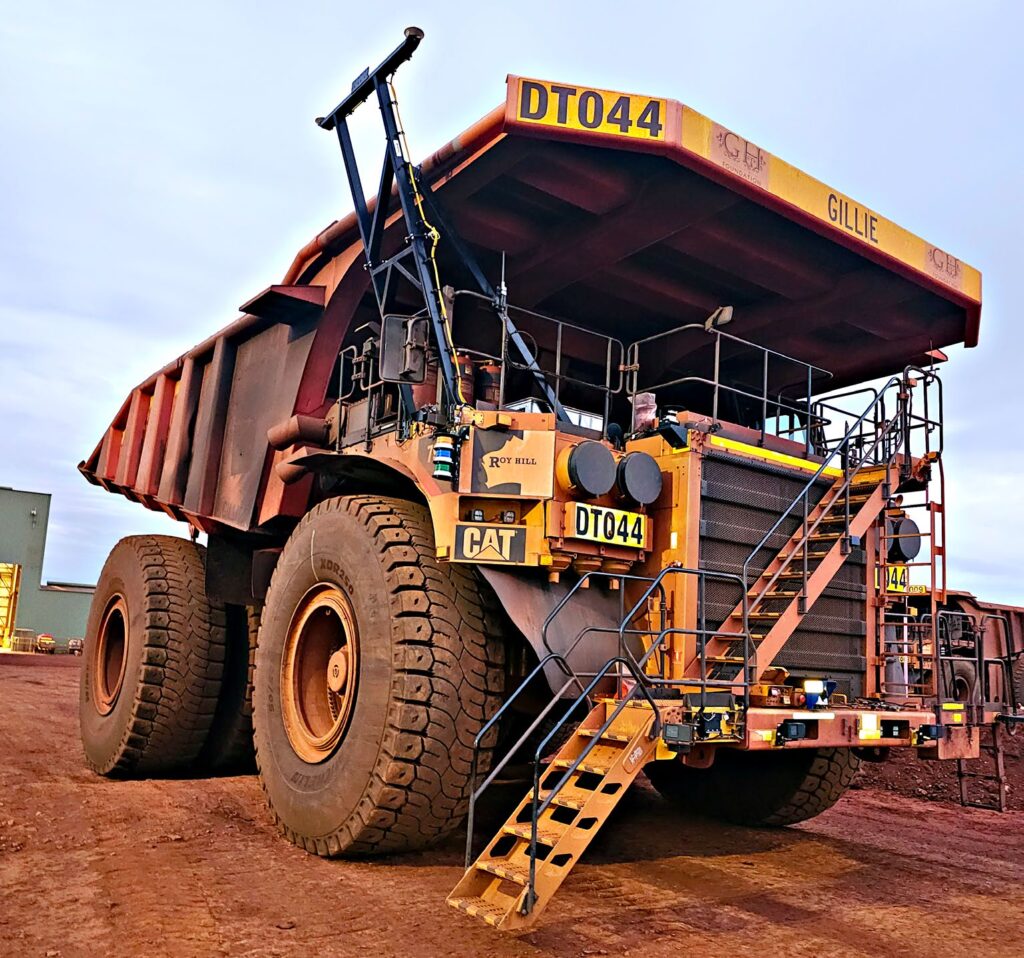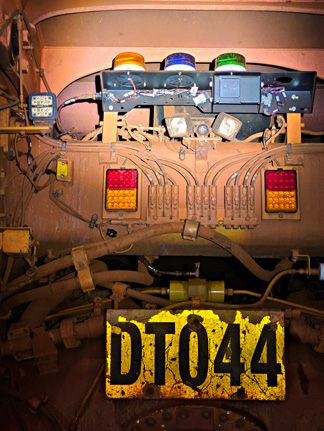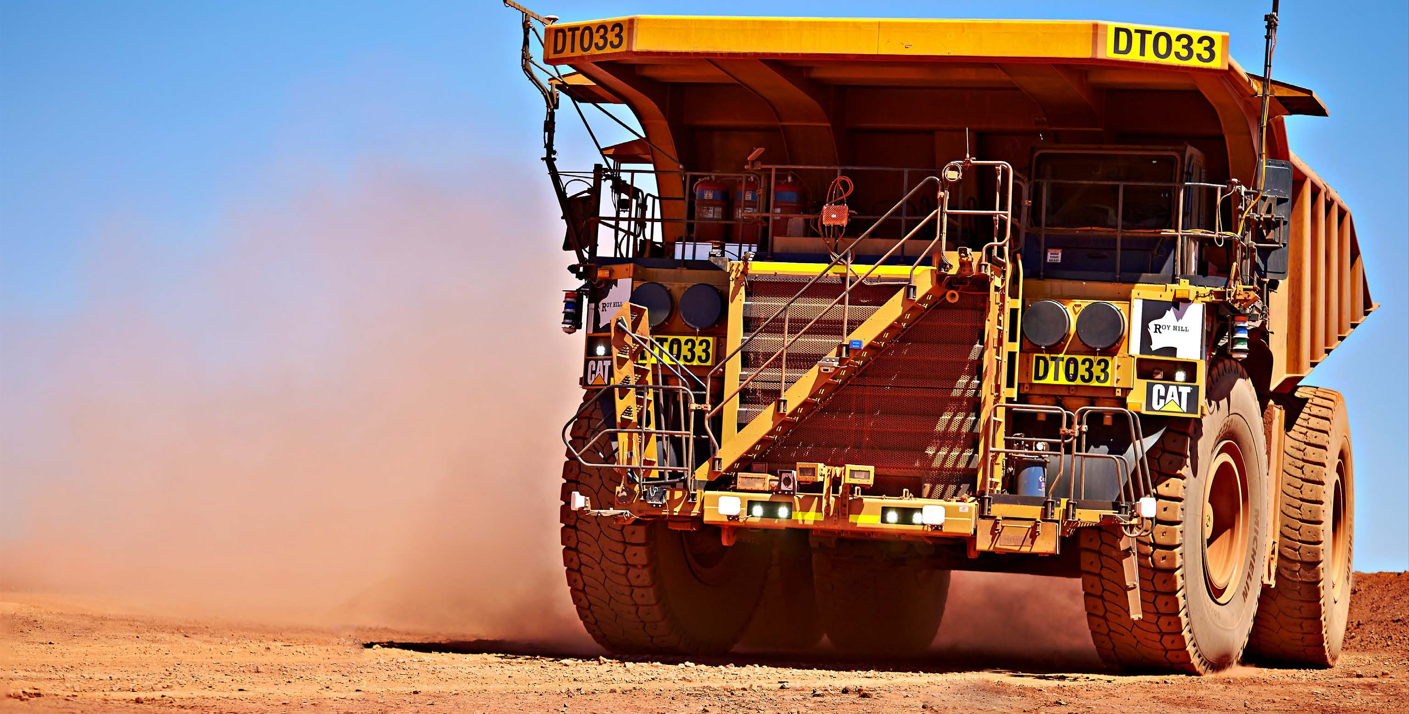Independence Day – The time for a proven, alternative autonomous haulage system is at hand
The Roy Hill project in Western Australia, is about to become the site of the world’s largest single autonomous haulage fleet, once all of its 96 trucks are converted to operate within this revolutionary new system.
This globally significant autonomous control system is the result of a collaboration between ASI Mining in the USA, Epiroc in Australia and the Roy Hill mine itself. Each partner has brought a significant contribution to the whole and the end result is a scalable autonomous solution that is OEM agnostic (ie: it can be applied to most OEM brands and models of mobile mining equipment). It has now been proven and field tested to operate at the highest level in one of the harshest environments in the world.
Development

For over 20 years, ASI Mining has been developing and building automation systems for mining equipment that were not tied to any specific make or model. They have been working tirelessly to offer a mature and viable alternative to current OEM programmes – their OEM agnostic solution. This end goal has now been fully matured and commercialised with the success of the Roy Hill project.
There are many advantages to this type of system for mine operators. Firstly, they are not locked into any particular make or model of haul truck, dozer or loader fleet. Each truck model is fitted with standard control hardware and a tailored actuation kit that converts the truck to drive-by-wire capability (which we will discuss later), which ultimately allows it to operate autonomously. ASI Mining’s system also allows interoperability at key points in the technology stack, which includes an interface with third-party fleet management systems.
This interoperability extends further though. At the system level and the machine level, the ASI Mining system can talk to the vehicle’s OEM onboard systems via various open interfaces. For participating OEM’s, including Liebherr and others, this allows the ASI Mining system to talk to the truck system natively. For other OEM trucks, ASI Mining installs a retrofit kit which converts the vehicle to autonomous control. In Roy Hill’s case, both Caterpillar and Hitachi trucks are controlled and monitored just as a human operator would.
Flexibility
Such a flexible and powerful system is also scalable across a variety of mining applications such as drills, blasting programmes, wheel loaders, dozers and more.
Modern mining is a constantly changing and evolving environment, which means that mining operators are constantly looking for ways to improve efficiencies, reduce costs and remain environmentally compliant. Decarbonisation and the push towards carbon zero production is driving the industry towards clean technology such as electric and hydrogen powered vehicles. The ASI Mining system offers the flexibility to pivot to the truck solution of choice, regardless of its brand or powerplant. It is a future proof solution for autonomy.
Furthermore, having a system that can be fitted to a combination of makes and models provides mining operators with the broadest possible options for purchasing or leasing a new fleet. They are not locked into any particular brand and can therefore acquire trucks that best suit the application and budget, rather than having to purchase vehicles that will work with a given OEM autonomy programme.
The industry seems to have been asking for this type of solution for many years and it is now available in a mature, safe, compliant and high performing package with full aftermarket support, warranty and parts supply. It is a truly proven commercial alternative for autonomous vehicle control.
Iron Clad Partnership
ASI Mining started from humble beginnings. Their first project back in 2006 was automating a CAT 777 truck, building the hardware and designing the software. Over the years, they developed into a company that now delivers rapid and agile solutions in what seems to be two-to-three times faster than typical OEM offerings. The Roy Hill project has been their coming of age, however, due to its scale and rigorous demands.
The massive Roy Hill automation system had to incorporate, among many other things, a cyber security protocol, compliance with the WA Safety Code of Practice and it also had to be scalable to cope with 96 trucks and over a hundred other ancillary vehicles. In addition, the hardware had to be tough enough to endure dirt, dust, heat and vibration on a non-stop basis. Its software had to integrate with Roy Hill’s existing fleet management system (Wenco) and blend seamlessly with its daily operations, while delivering boosts to safety and efficiency. This aggressive and ambitious set of requirements has honed the final product into a truly global solution that can be tailored to any mining application.
Apart from over 20-years of development from ASI Mining, the final success of this ambitious project also required the critical input of Epiroc and Roy Hill.
Epiroc brought a considerable contribution to the table. Initially, they provided their experience to assist in commercialising the product. They applied the engineering knowledge from their world class drill technology as well as a local team of more than 100 staff to provide boots on the ground in WA. The size and scope of their operation also meant that they could provide logistics, global supply chain management, warehousing of parts and after sales servicing and maintenance.
Epiroc will also establish training boot camps around the world to train local staff and provide a controlled roll out of the system in due course. This will initially include the USA, Canada, and South America.
Roy Hill’s contribution of time, resources and operational expertise was critical to the ultimate success of the autonomous haulage solution (AHS) project. Onsite testing at the company’s extensive Pilbara operation provided the real-world data and conditions necessary to fine tune ASI Mining’s autonomous system and create a fit-for-purpose autonomous haulage solution.
In an active mine, it is not possible to predict exactly what can go wrong or when, so having the opportunity to test in the actual environment in which the trucks would operate was invaluable.
Working on site allowed a Roy Hill-specific solution to be developed that responds in a safe and predictable way, in accordance with their specific criteria.
Installation and Operation

ASI Mining has developed dozens of different retro-fit conversion kits for a wide range of mobile mining machinery, while its parent, Autonomous Solutions Inc. (ASI), has developed kits for well over 100 models of various machine types.
While much of the on-board hardware is standard, the actuation kit module is developed specifically for that particular vehicle, allowing control of throttle, brake, transmission, steering and tipping (in the case of haul trucks). Applications range from early Komatsu 930E2 trucks (20 years old with 60,000+ hours on the clock) to the very latest autonomous ready trucks.
Most of these trucks were not originally designed to be autonomously controlled so ASI Mining’s engineers had to leverage the OEM systems to gain access and allow remote operation and monitoring.
Each vehicle is fitted with two modules. The first is a tailored, model-specific, control kit which enables electronic actuation of the vehicle and allows it to be operated remotely.
The second is a generic automation kit, which also includes obstacle detection, system inputs from sensors and gives it perception capability. This module then allows the vehicle to communicate and integrate with ASI Mining’s software – Mobius. This allows it to become a fully independent and autonomous addition to the mine site.
Mobius brings the vehicle to life. This smart software not only monitors the state and position of the vehicle but also makes localised decisions based on its assigned path and tasks as well as right of way hierarchies and road rules.
The key to the whole system is the fact that each vehicle is fitted with these two modules, which allow it to not only perform its own duties but also interact with all other vehicles on site in a huge, orchestrated operation that never needs rest, is always operating at peak efficiency and functions with the best possible operating procedure in place for that particular piece of equipment.
Apart from monitoring the state and health of the vehicle and reporting any critical faults, Mobius takes information from the fleet management system and passes it to the truck.
This is used to create a route, determine speeds and generally set the behaviour of the truck once in operation.
Its onboard telemetry uses mission assignments received from Mobius and GNSS coordinates to plot its path, while its other sensors are constantly monitoring its proximity to other vehicles and obstacles.
Epiroc’s team handle the installation of both modules, which arrive on two pallets and currently take approximately four days to install into each truck. This installation time is constantly reducing though, as the team become faster and more familiar with the process. At the time of writing, Epiroc had completed 16 trucks, with 80 still to go. Installation is simultaneously being carried out on a fleet of support vehicles, including graders and dozers. It is anticipated that these will be completed at a rate of 15 vehicles per month.
Disruptive Flexibility

The net result of decades of development and this recent alliance between three highly complementary partners, is a highly flexible and agile autonomous solution, which can be applied to virtually any piece of machinery – regardless of brand, model or age.
Furthermore, the adaptive software and robust hardware allow the system to be tailor-made to suit any mining application anywhere in the world.
Mine operators now have access to a fully mature and complete automation solution that allows them to integrate all their equipment, from haul trucks to dozers and graders, into one comprehensive system.
A system which is OEM agnostic and will interact seamlessly with existing fleet management and monitoring software.
The Roy Hill project has given rise to a truly viable alternative to OEM autonomous vehicle control. Managing the largest single fleet of autonomous trucks in the world is an excellent way to make your mark and prove your value to other miners in Australia and around the world.
In a time when the mining industry faces unprecedented challenges in labour supply, a proven system for vehicle autonomy has never been more relevant or important.
Independence Day has arrived.
SOURCES:
ASI Mining
Epiroc
Roy Hill








































